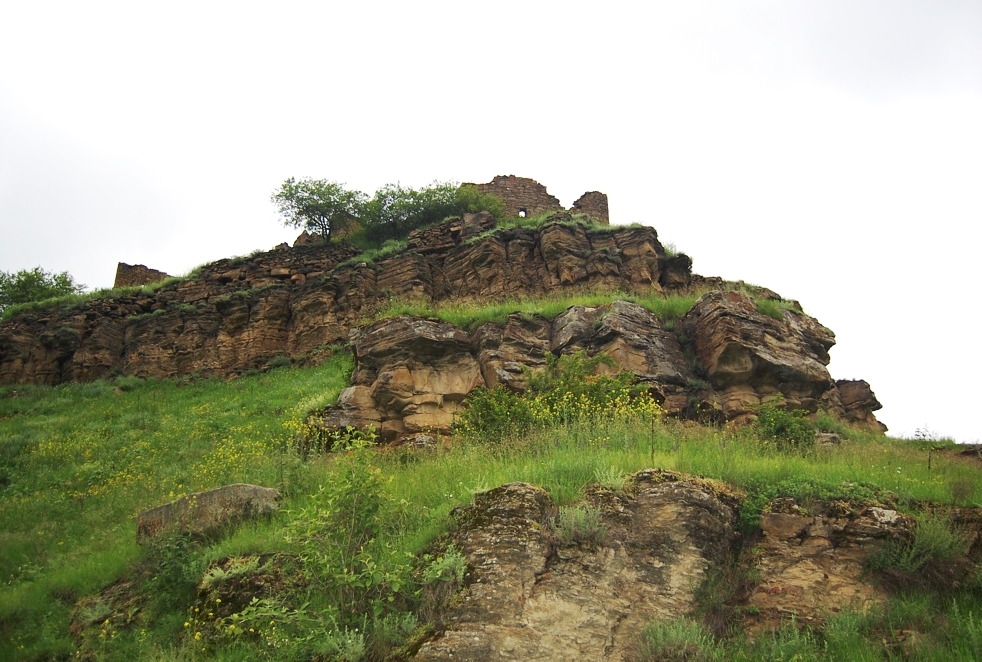
In the mountains of Dakhadaevskiy district in Dagestan, 1000 meters above sea level and 3 kilometers from the village of goldsmiths Kubachi lies Kala-Koreysh, an VIII century medieval fortress, which was the former capital of a feudal community (Kaytag utsmiystva) and the first muslim settlement in the Caucasus.
In the middle-ages, Kala-Koreysh was a well-defended fortress that served as political and cultural center, and most importantly it became the focal point for the spread of the Islamic faith in the Northern Caucasus. Built on top of inaccessible mountains by the Kuraysh in VII-VIII century, it stands at the confluence of five important rivers and it’s accessible through one single road. Built on a strategic point, they could control trade in the region and at the same time spread the faith.
Kuraysh was the name of the merchant tribe into which Prophet Muhammad was born – Kala Koreysh means “the fortress of koreyshids”. Several Kuraysh tribesmen came to the mountains of Dagestan as conquerors after Arabs conquered Derbent in 654 – the biggest city of Dagestan at the time. The spread of Islam began in the Cacausus which ended in the XIXth century with the conversion of the Ingush people.
As people started moving to the lowlands in the XVIII century, its role as an important cultural and commercial center gradually decreased. The last inhabitants were forcibly evicted to Chechnya by the Soviets in 1944 and most of the structures were destroyed.
Today, the only constructions still standing in Kala-Koreysh are a IX century mosque and a mausoleum; only one person lives here as guardian of the sacred place. The alabaster tiles of the partially destroyed mosque are displayed in the Regional Museum.
Kala Koreysh also has a graveyard where both noblemen and common residents were buried; tombstones date back to the IX-X century and contain sacred Islamic texts. The unique carving on the tombstones is very similar to the Kubachi pattern design (for more on Kubachi click here). The graveyard also has pagan sarcophaguses which are not typical of Muslim culture (where the dead are buried only in the ground).
Today, Kala Koreysh serves as tourist spot and place of pilgrimage for devout Muslims (the pilgrimage is called “ziyaret”).
-

-

-

-

-

-

-

-

-

-

-
House of the settlement guardian
-

-

-

-

-

-

-

-

-

-
Kala Koreysh first Muslim settlement
-

-

-

-

-

-

-

-

-

-

-
Kala Koreysh on the top of mountain
-

-
sarcophagus (atypical of Muslim culture where the dead are buried only in the ground)
-

-

-
Memorial Sultanov Omar Aliyev resident of Kala Koreish who helped restore it
-

-

-



































































































































































































